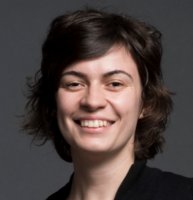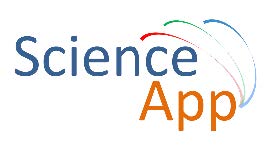Anca Dragan, UC Berkeley, US - http://people.eecs.berkeley.edu/~anca/

Anca Dragan is an Associate Professor in the EECS Department at UC Berkeley. The goal of her research is to enable robots to work with, around, and in support of people. She runs the InterACT Lab, which focuses on algorithms for human-robot interaction -- algorithms that move beyond the robot's function in isolation, and generate robot behavior that coordinates well with people. The lab works across different applications, from assistive arms, to quadrotors, to autonomous cars, and draw from optimal control, game theory, reinforcement learning, Bayesian inference, and cognitive science. Anca Dragan also helped found and serve on the steering committee for the Berkeley AI Research (BAIR) Lab, and she is a co-PI of the Center for Human-Compatible AI. She has been honored by the Sloan Fellowship, MIT TR35, the Okawa award, an NSF CAREER award, and the PECASE award.
Towards assistance that empowers
My group and I have traditionally thought of assistance as having to infer the human's goal or intent or preference, and help optimize for that. This is still a paradigm I believe in, but what makes it very tricky is modeling humans accurately enough to make proper inferences. Sometimes just assuming a noisy-rational human works fine; other times human systematic biases lead to remarkably poor inference. Recently, motivated by our collaboration with UCSF on enabling patients with quadriplegia to operate their devices via brain-machine interfaces, we've been thinking about alternative paradigms for assistance that are goal-agnostic. That is, how can we get agents to be useful to our patients without explicitly inferring what the patient is trying to do?
Georgia Gkioxari, Facebook AI Research, US - https://gkioxari.github.io/

Georgia Gkioxari is a research scientist at Facebook AI Research (FAIR). She received a PhD in Computer Science and Electrical Engineering from the University of California at Berkeley under the supervision of Jitendra Malik in 2016. Her research interests lie in computer vision, with a focus on object and person recognition from static images and videos. In 2017, Georgia received the Marr Prize at ICCV for "Mask R-CNN". Georgia is the recipient of the PAMI Young Researcher Award.
Understanding Objects and Scenes in 3D
2D visual recognition has seen unprecedented success, with the state of the art improving at every conference cycle. But as we develop sophisticated machines that recognize objects on the image plane and under challenging settings, we tend to ignore that the world is not planar and objects don't live in a 2D grid. On the other hand, the focus of 3D object recognition is different, with benchmarks that lack in complexity compared to their 2D counterparts and models that can not tackle complex scenes. In this talk, I will present some of our efforts to combine advances in 2D recognition with 3D reasoning. I will also present PyTorch3D, our deep learning library of 3D operators, which builds on PyTorch and contains highly optimized 3D operators for training deep learning models with 3D data.
Danica Kragic, Royal Institute of Technology, SE - https://www.csc.kth.se/~danik/

Danica Kragic is a Professor at the School of Computer Science and Communication at the Royal Institute of Technology, KTH. She received MSc in Mechanical Engineering from the Technical University of Rijeka, Croatia in 1995 and PhD in Computer Science from KTH in 2001. She has been a visiting researcher at Columbia University, Johns Hopkins University and INRIA Rennes. She is the Director of the Centre for Autonomous Systems. Danica received the 2007 IEEE Robotics and Automation Society Early Academic Career Award. She is a member of the Royal Swedish Academy of Sciences, Royal Swedish Academy of Engineering Sciences and Young Academy of Sweden. She holds a Honorary Doctorate from the Lappeenranta University of Technology. She chaired IEEE RAS Technical Committee on Computer and Robot Vision and served as an IEEE RAS AdCom member. Her research is in the area of robotics, computer vision and machine learning. In 2012, she received an ERC Starting Grant. Her research is supported by the EU, Knut and Alice Wallenberg Foundation, Swedish Foundation for Strategic Research and Swedish Research Council. She is an IEEE Fellow.
Robots that act and interact
The integral ability of any robot is to act in the environment, interact and collaborate with people and other robots. Interaction between two agents builds on the ability to engage in mutual prediction and signaling. Thus, human-robot interaction requires a system that can interpret and make use of human signaling strategies in a social context. In such scenarios, there is a need for an interplay between processes such as attention, segmentation, object detection, recognition and categorization in order to interact with the environment. In addition, the parameterization of these is inevitably guided by the task or the goal a robot is supposed to achieve. In this talk, I will present the current state of the art in the area of robot perception and interaction and discuss open problems in the area. I will also show how visual input can be integrated with proprioception, tactile and force-torque feedback in order to plan, guide and assess robot's action and interaction with the environment. For interaction, we employ a deep generative model that makes inferences over future human motion trajectories given the intention of the human and the history as well as the task setting of the interaction. With help predictions drawn from the model, we can determine the most likely future motion trajectory and make inferences over intentions and objects of interest.





